Yellowstone Photography Guide
If you’re considering a trip to Yellowstone for landscape or nature photography, you are absolutely in for a treat. Among the 61 US national parks, Yellowstone is easily one of the most unique and memorable, mainly thanks to its geothermal features such hot springs and geysers and its abundance of megafauna including bison and elk.
I’ve photographed in Yellowstone on two separate occasions and came away with a few of my most favorite images. There are huge opportunities to create unique images in this park.
In this article, I want to go over what I think you should know before you head out to Yellowstone, show you some of the locations I really enjoyed shooting, and give you some of my hard-won tips and tricks.
When to Go
I have been to Yellowstone once in May and once in September. In general, I enjoy visiting national parks (or any attractions, really) outside of the “peak” season, and this holds for Yellowstone as well.
Even if you don’t mind the summer heat, there are plenty of reasons to visit early or late in the year:
-
The park is huge and its attractions are accessible only via one set of loop roads. If they are crowded with cars, it will take you ages to get anywhere. This is true for practically all national parks, but is particularly tough in Yellowstone because of the distances between everything.
-
Likewise, to capture scenes less crowded with people, it’s best to go when there are fewer people there. Be ready to rise early to dodge the crowds if you go in a busier time of year.
Most roads in Yellowstone are closed to regular vehicle traffic during the winter months and are accessible only to oversnow travel (snowmobiles, etc.) You can check this page of the NPS site for current schedules.
Where to Stay
There are five entrances to Yellowstone and they are each several hours' drive from one another, so I would advise you to think hard about the attractions you want to visit and where you can stay to give you the best access to those areas.
Review the official maps on the NPS website to see where the entrances and attractions are in relation to one another.
I have had great experiences staying in West Yellowstone, Montana, which is situated at the very edge of the park, a short drive to the West Entrance. West Yellowstone gives you access to stores and restaurants and a relatively short drive to the edge of the park. The park is huge, so don’t waste time driving to it, you’ll need hours to drive within it. More on this in the next section.

Another cool feature of West Yellowstone is the Grizzly and Wolf Discovery Center, which is exactly what it sounds like. The animals here are rescues—it is not a “traditional” zoo—though an excellent opportunity to see wolves and bears up close.
There are usually hotels or lodges within the national parks, but I have never stayed in one because they are typically very expensive. Your threshold for cost may be different from mine, so if you can stomach the expense, these options are sure to be the most convenient and scenic.
Getting Around
Yellowstone is 2.2 million acres (that’s almost 3,500 square miles or nearly 9,000 square kilometers), which makes it the second largest national park in the continental United States, smaller only than Death Valley. All of the parks larger than Yellowstone and Death Valley (of which there are six) are in Alaska.
Suffice it to say, Yellowstone is huge, and getting around the park is time-consuming. It pays to plan ahead and be deliberate about where you want to be and when, and to keep traffic and weather conditions in mind.
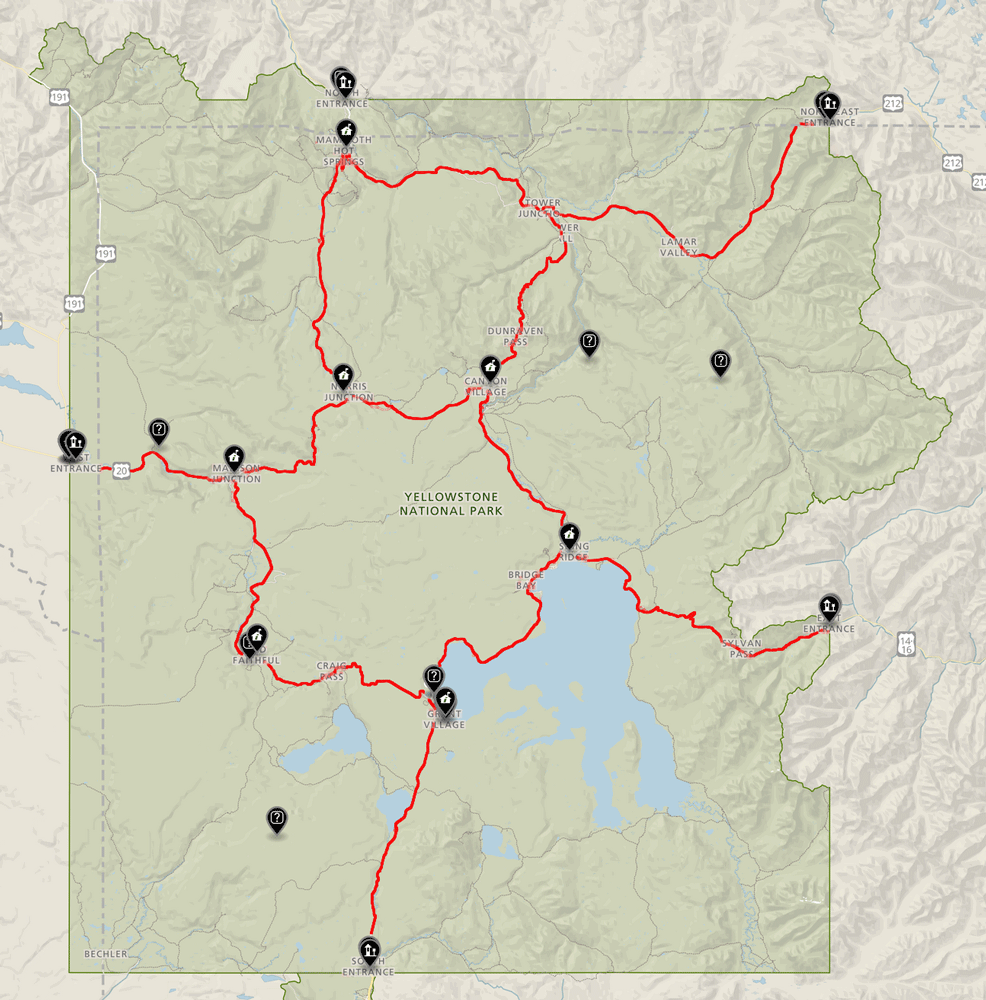
In the map above, you can see the park’s five entrances and its main roads, which resemble a figure “8.” Note that the north and west entrances are the shortest drive from the park’s edge to that loop road (which is actually called Grand Loop Road).
Just over the park’s border on the west is West Yellowstone, Montana. Just over the border on the north is Gardiner, Montana. Both towns have amenities, though I prefer West Yellowstone because it is a shorter drive from the nearest large airport, which is Salt Lake City International in Utah.
The east-west road connecting the two sides of the figure “8” is Norris Canyon Road. Most of the north half of Grand Loop Road and Norris Canyon Road are closed to regular vehicles in the winter, so you can’t get to Mammoth Hot Springs, Norris Geyser Basin, Artist’s Paintpots, or anything else up there unless you’re on a snowmobile or cross-country skiing.
Grand Loop Road is about 140 miles long and it would take you a shade under four hours to drive all the way around in light traffic. From West Yellowstone to Old Faithful, as an example, is about an hour drive.
No matter where you’re staying, if you plan to photograph sunrise be ready to get up early to make time for driving, or get physically and psychologically prepared to sleep in your vehicle because there is a lot of distance to travel in this park.
What to See
There is so much to see in Yellowstone, and the only downside of it all is how spread out everything is. Here I’ll list what I would call the “must see” attractions at Yellowstone.
Photography opportunities in the park can be broken into three categories: geysers, hot springs, and wildlife.
Of course, wildlife moves around, so there is no specific or certain place where you’re going to see any, but I’ll cover some tips you can use to increase your chances.
Geysers
You can’t visit Yellowstone without checking out a couple of geysers. A geyser is a type of hot spring with underground channels and chambers that allows water to form a seal until steam forces it up and out in a column of boiling water.
There are thousands of geysers in Yellowstone, hundreds of which have names (check out this long list of geothermal features on Wikipedia), but only a few are predictable or large enough to be worth waiting for, especially if it isn’t the main reason you visited Yellowstone.
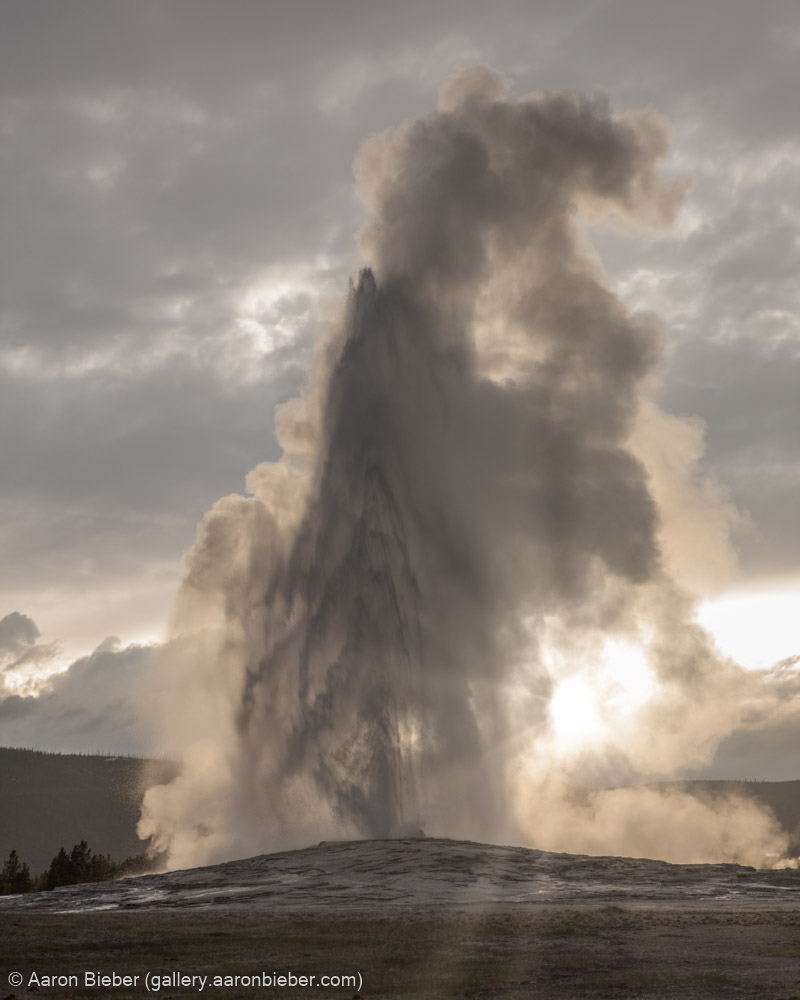
These are some of my top tips for photographing geysers at Yellowstone:
-
If you’re going to physically wait around for a geyser to erupt, you may as well wait for Old Faithful because it is the biggest geyser that erupts with regularity.
-
There are smaller geysers that erupt more frequently and you can seek those out, though there are geysers everywhere you go in Yellowstone, so you may instead elect to “catch as catch can” while you seek out opportunities to shoot the other features in the park.
-
When the geyser finally erupts, the sky will be filled with white steam and water, so watch your exposure, don’t assume you can dial everything in beforehand! This is a great time to use an automatic metering mode (I prefer aperture priority) and to think about how your metering is configured (e.g. center spot, center-weighted, evaluative/matrix).
-
Watch the wind. If you’re downwind from the geyser when it erupts, you may see nothing but steam (and you might even get wet!)
Hot Springs
There are countless hot springs in Yellowstone, which I further group into three major categories:
-
Clear water springs
-
Prismatic springs
-
Mudpots
Clear water springs are probably the most common overall and range from innocuous holes in the ground with a bit of steam coming out of them to roiling pools of boiling water. Unless you are specifically fascinated by hot springs, these features may not be exciting subjects for you, but the steam they produce can create a moody atmosphere.
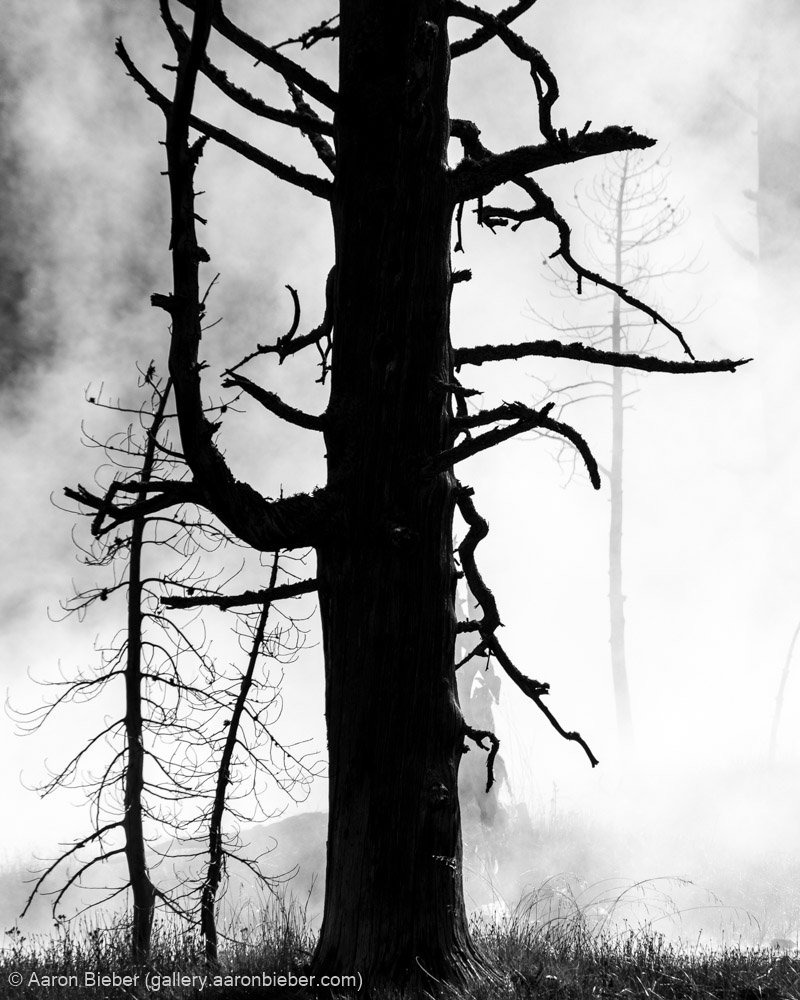
Prismatic springs is a category I made up based on the famous Grand Prismatic Spring. Any hot spring where minerals and bacteria create colorful areas I think of as a “prismatic” spring. You will see a lot of interesting colors in Yellowstone.
For me, these are among the most interesting features to photograph. I’m pretty obsessed with textures, contrast, and shapes, and you’ll find all of that laid out on the ground in front of you in Yellowstone.
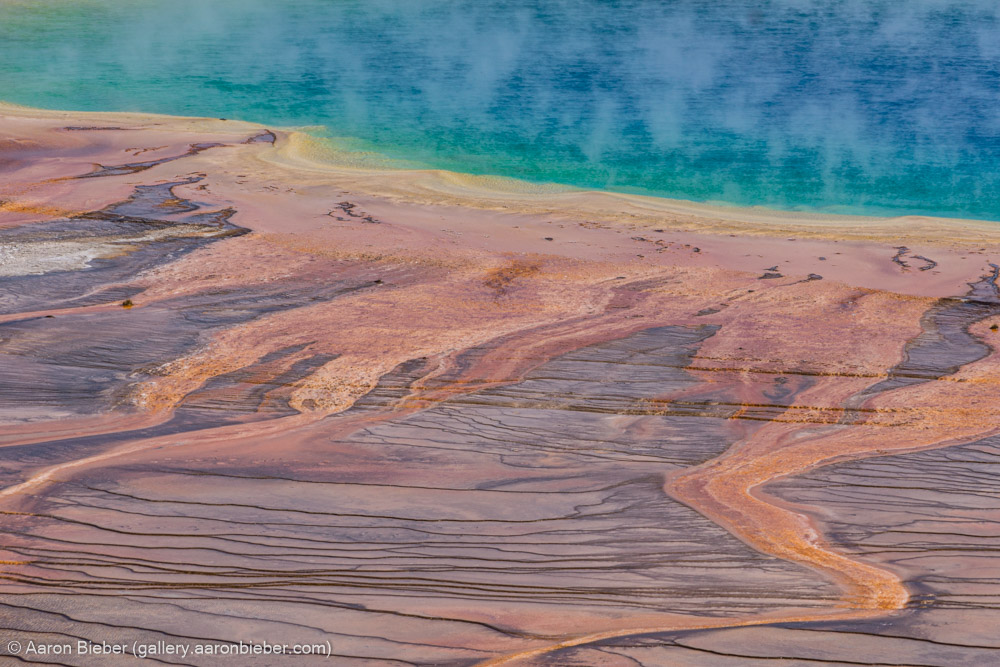
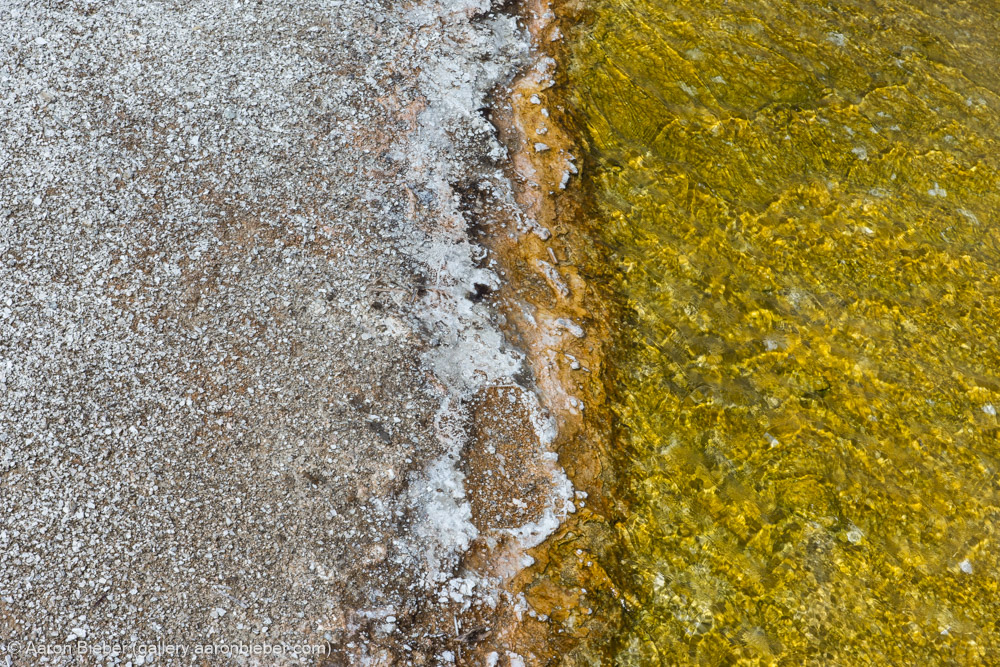
Finally, mudpots are exactly what they sound like. If a hot spring occurs in an area with an abundance of clay or finer dirt, you end up with puddles of bubbling mud, though similar to the prismatic springs these muddy holes can also be quite colorful.
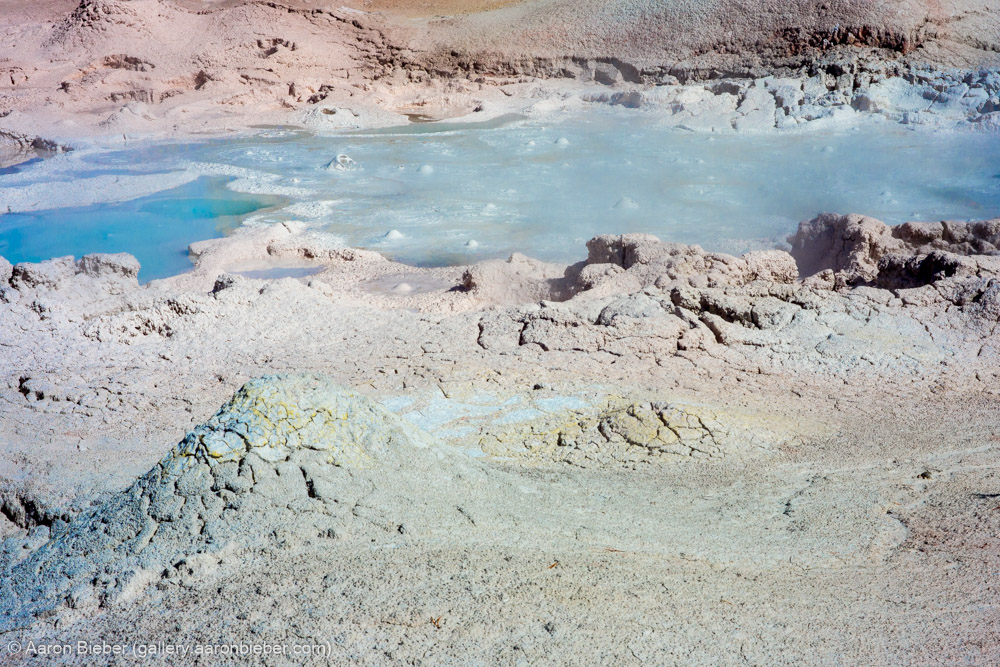
The best place to see colorful mudpots is the aptly named Fountain Paint Pot. There you will be able to see and read about several springs, mudpots, and geysers along a boardwalk path.
If mudpots are what you really want to see, I recommend visiting in the fall. In spring and early summer, the mudpots are watered down from rain and snow, but by the end of summer they are usually nice and thick.
Wildlife
Yellowstone is home to hundreds of species ranging from birds and fish to amphibians, reptiles, and mammals. It is quite likely that you want to visit Yellowstone to photograph some of its unique mammals, like wolves and bison, because there is no better place to find them.
The NPS has a thorough enumeration of the animal species found in the park, where they like to hang out, and what is interesting about them on the Yellowstone Wildlife page, which you should visit for details.

I am not a wildlife photographer. I enjoy photographing the occasional animal, when conditions are right, but I don’t seek them out, so I’m probably the wrong person to give wildlife photography advice.
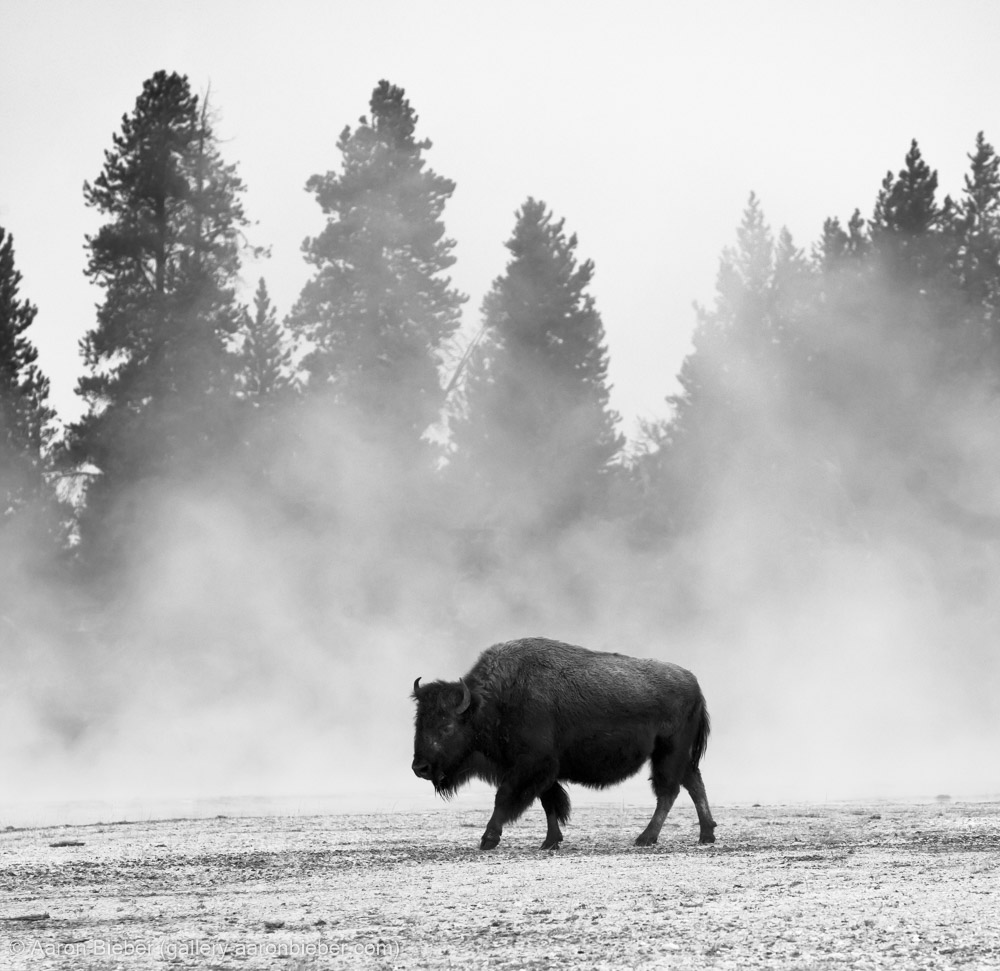
That said, Yellowstone is a fantastic place to spot bison, which are abundant, as well as elk and wolves. I didn’t see any wolves when I was there on either trip, but Yellowstone was one of the chosen recovery areas for the once-endangered gray wolf, so if you want to see these animals in their natural habitat you can’t do much better than the northern range of this park.
This may seem obvious, but bear in mind that wild animals are just that. Don’t approach animals or try to interact with them, don’t feed them, and don’t turn your back on them to try to take a selfie with them. People have actually died doing this.
Depending on the time of year, you may receive a rather morbid cautionary leaflet from the ranger station when you enter warning of the dangers of messing around with bison. Take heed, these animals can weigh thousands of pounds and they move a lot faster than you may think. Treat them with respect, give them space, and you’ll be fine.
Must-See Attractions
If you’re going to Yellowstone chiefly to photograph, here are the places you should absolutely not miss.
Old Faithful
I already mentioned it above, but it’s one of the features the park is known for, so you should definitely check it out.
Grand Prismatic Spring
I mentioned this one, too, but it bears repeating. Try going early in the morning before a lot of people show up. For a more interesting view, walk up the Fairy Falls Trail and (optionally) scoot up the hillside opposite the spring to look down on it from above.
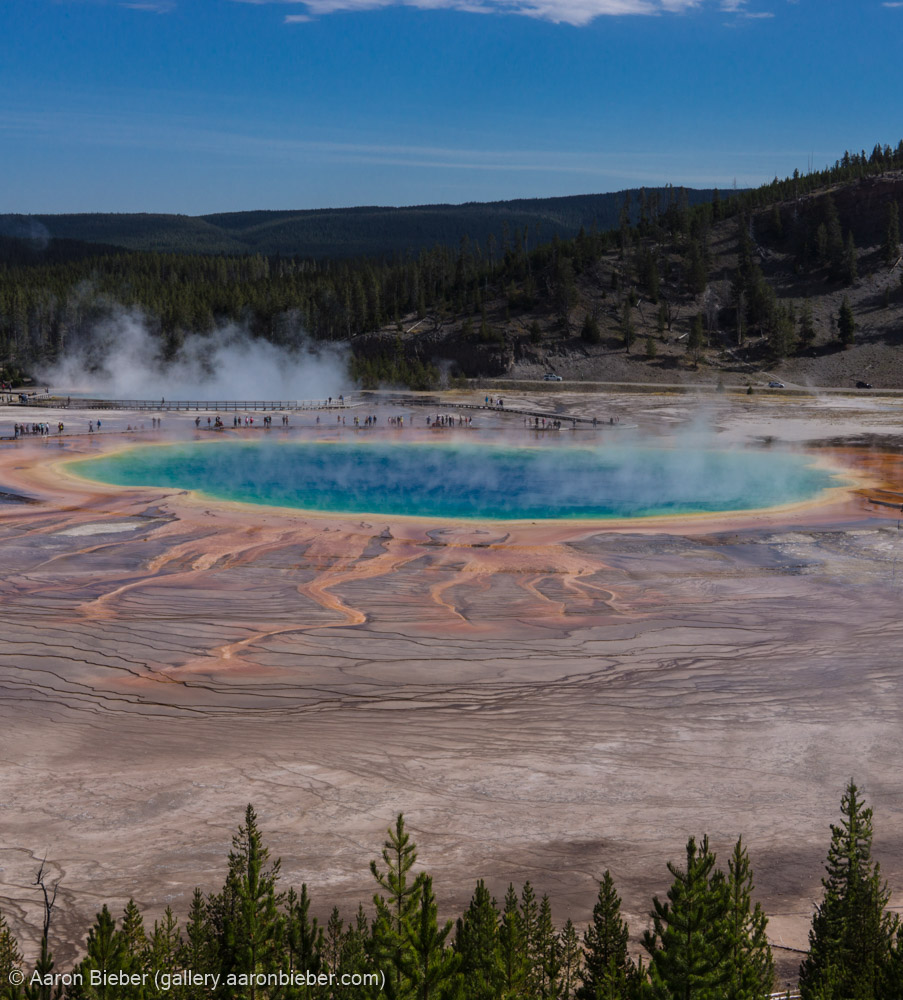
Though the spring is known—and named—for its bright colors, this is my favorite image from that area:
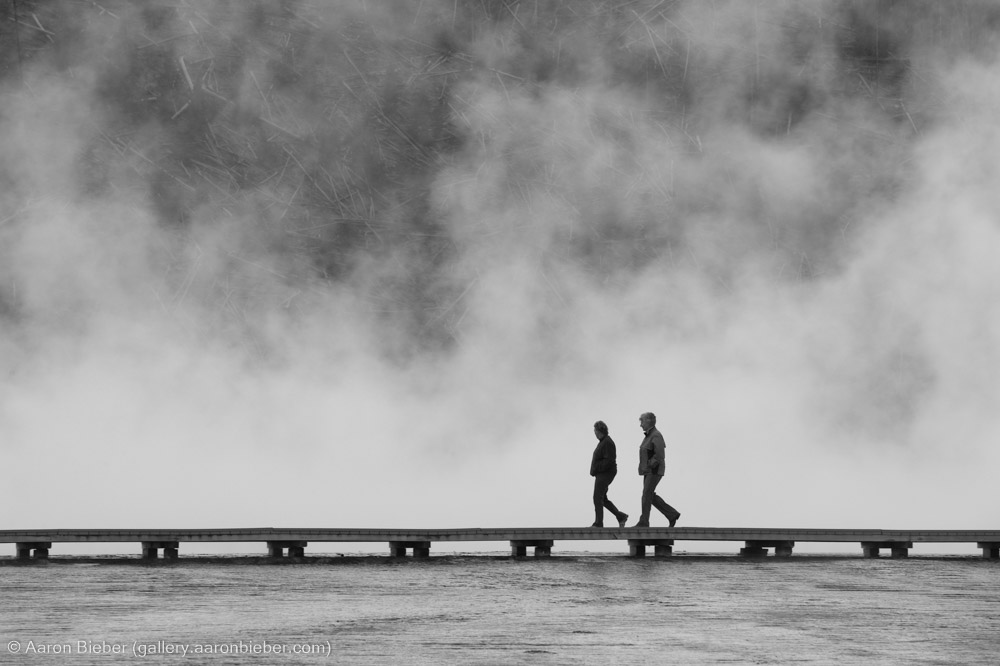
Mammoth Hot Springs
This area of the park is insane. It’s multiple levels of travertine terraces, which by itself would be amazing to see, but when you add a ton of steaming hot water to the mix it just gets crazy. There is a boardwalk that will take you all around the area and I once again recommend visiting early in the day.
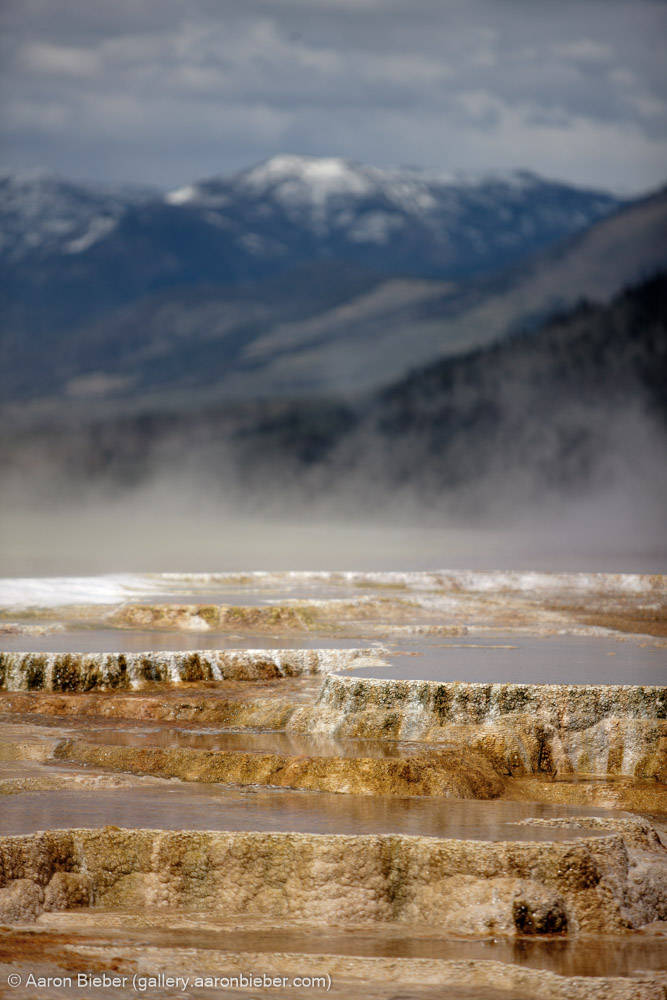
Firehole Canyon
I really enjoyed driving along Firehole Canyon Road and stopping to climb down to Firehole River and Firehole Falls. This is not one of the most talked-about areas of the park and is perhaps not as interesting as the geothermal attractions, but it’s quite beautiful nonetheless.
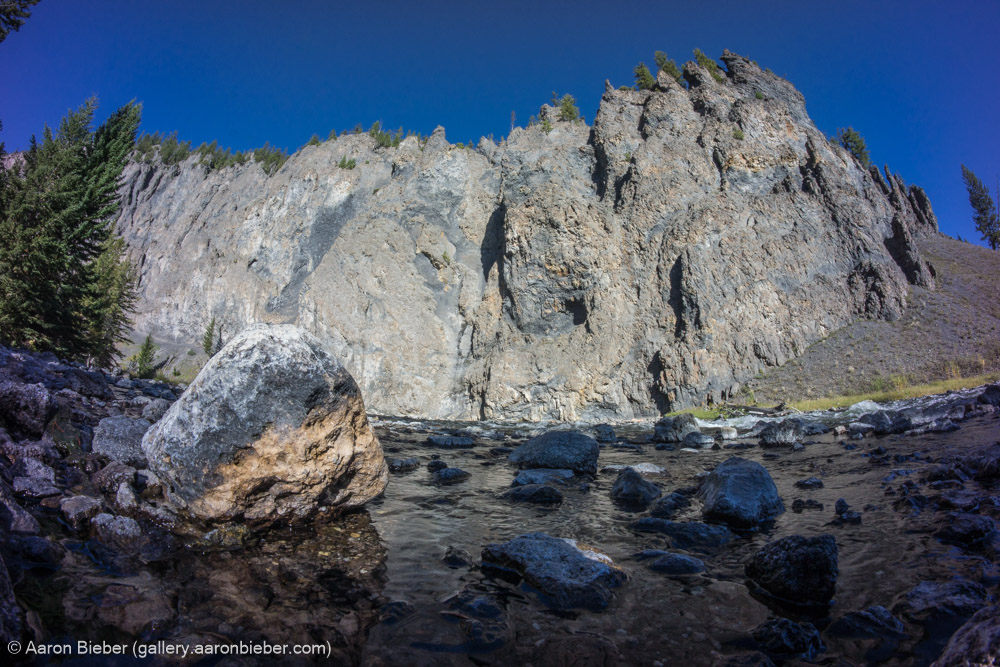
Conclusions
Of the 11 national parks that I’ve visited, I’ve returned multiple times only to three of them, and Yellowstone is among those. The geothermal features, textures of the landscapes, and diverse wildlife make Yellowstone an incredible photographic opportunity.
If you have any questions about photographing Yellowstone that I haven’t yet answered, leave a comment below!
 Single-Serving Photo
Single-Serving Photo
Comments